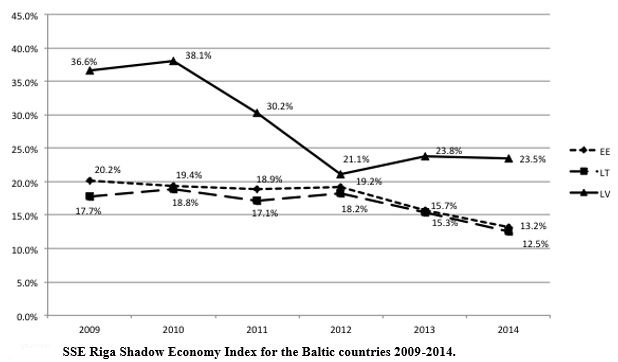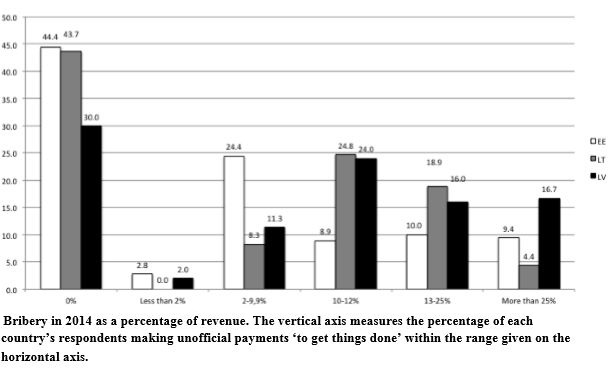Analytics, Baltic, Financial Services, Legislation, Markets and Companies, Shadow economy
International Internet Magazine. Baltic States news & analytics
Saturday, 27.04.2024, 01:57
In 2014, Latvia's shadow economy remained unchanged, while declining in Lithuania and Estonia
 Print version
Print version
In terms of the share of the gross domestic product (GDP), Latvia's shadow economy accounted for 23.5% in 2014. Compared with 2013, Latvia's shadow economy has only dropped by 0.3% of GDP. Conversely, Estonia and Lithuania's shadow economy accounted for 12.5 – 13.2% of GDP in 2014, and the long-term trend of a gradual decline of the shadow economy has persisted in both countries. According to the findings of the study, the shadow economy of the neighbouring countries has declined by about 2.5 – 2.8% compared with 2013.
“We can therefore conclude that in 2014, Latvia's shadow economy was twice as high as that in the neighbouring countries,” says Dr. Arnis Sauka, the author of the study and Assistant Professor of SSE Riga.

While the level of Latvia's shadow economy has practically remained unchanged, there have been changes in its structure. In 2014, unreported business income, i.e. tax evasion, accounted for the greatest share of Latvia's shadow economy, currently at about 46% of Latvia's aggregate shadow economy. Envelope wages is the second largest item of Latvia's shadow economy. According to A. Sauka, envelope wages have been declining, however the decline has been offset by increasing tax evasion: in 2014, Latvian companies failed to report a greater share of their business income compared with the previous two years. That is, unreported business income is higher than envelope wages and accounts for about 46% of Latvia's total shadow economy, which is a critical signal to policy-makers."
Shadow economy in the Latvian construction industry is estimated to be as high as 48.9% (compared with approx. 20% in Lithuania and Estonia). It is possible that partly due to the significance of the construction industry, the highest level of shadow economy in Latvia in 2014 was concentrated in Riga. This industry also has the highest shadow economy in Estonia and Lithuania, however its share is at a more moderate level – 21% and 19%, respectively.

The SSE Riga Shadow Economy Index is estimated annually based on surveys of entrepreneurs in the Baltic countries. The Index combines estimates of misreported business income, unregistered or hidden employees, and unreported “envelope” wages to estimate the shadow economies as a proportion of GDP.
The authors of the research are Dr. Arnis Sauka, Director of the Centre for Sustainable Business at SSE Riga, and Dr. Tālis Putniņš, Assistant Professor at SSE Riga. The SSE Riga Shadow Economy Index for the Baltic States is commissioned by the Centre for Sustainable Business at SSE Riga with the financial support of SEB.








 «The Baltic Course» Is Sold and Stays in Business!
«The Baltic Course» Is Sold and Stays in Business!

